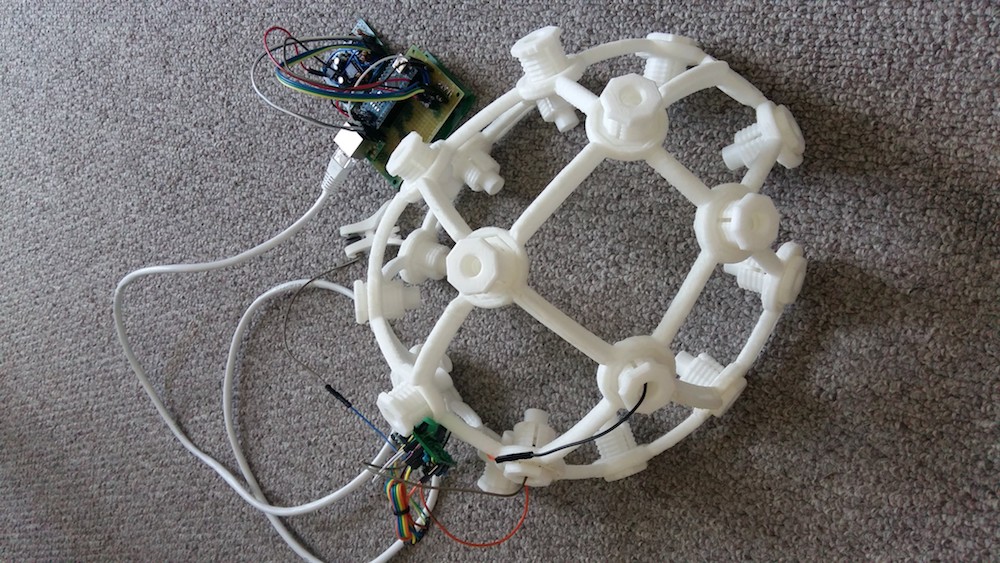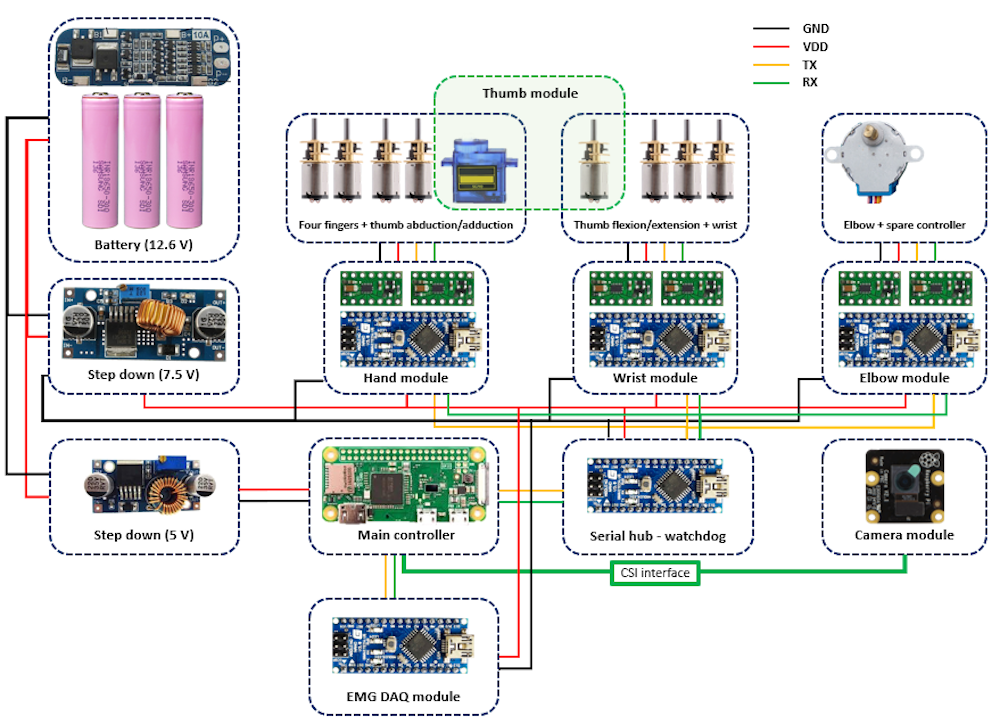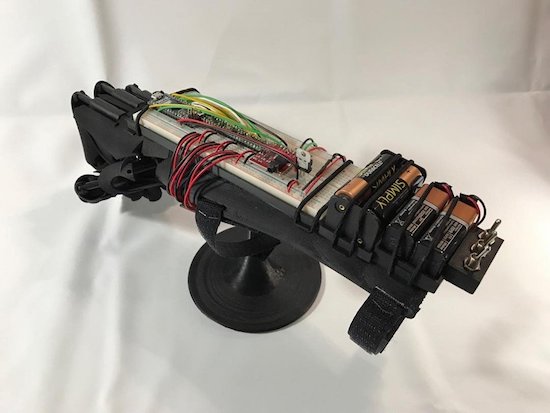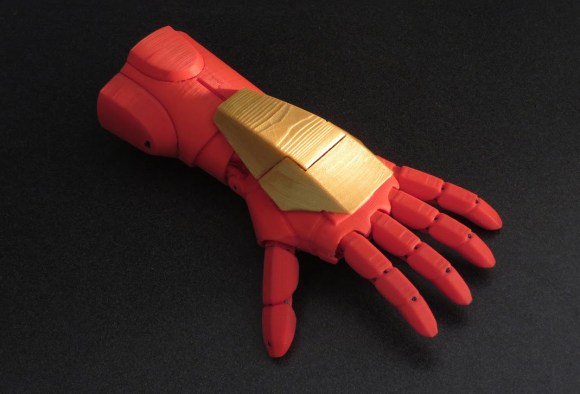A low-cost, 3D-printed transhumeral prosthesis

To help a patient in his country with a congenital limb deficiency, Buzi Nguyen has designed a 3D-printed transhumeral—above the elbow—prosthesis prototype. The device features 10 degrees of freedom, including independent control of four fingers and a thumb, along with movement capabilities for the wrist and forearm.

The prosthesis is powered by a number of Arduino boards and a Raspberry Pi, and equipped with computer vision to track and choose grip patterns for object handling. It can also potentially be operated via brain-computer interface and electromyography.

A demonstrate of all the currently supported features can be seen in the video below.





